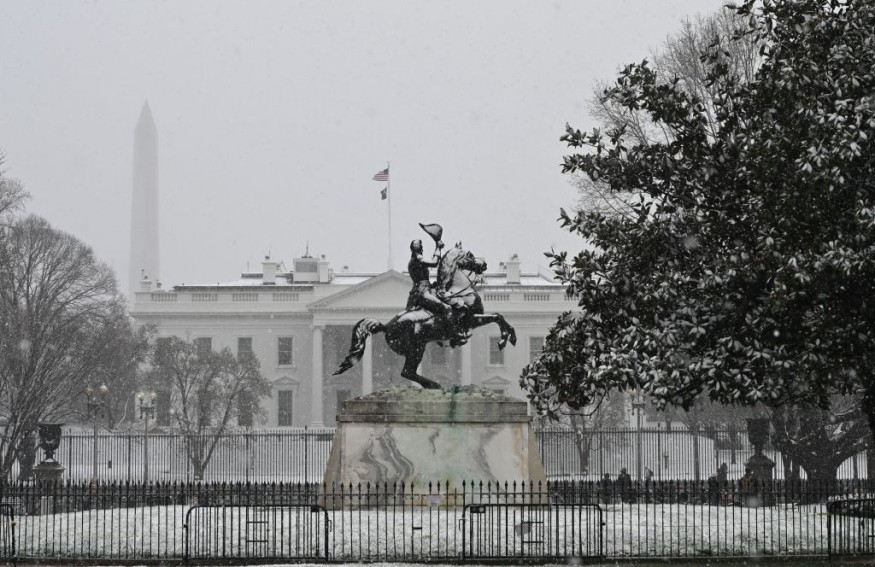According to meteorologists, multiple rounds of severe weather, including the possibility of tornadoes, are expected for the storm-weary southern United States.

By Wednesday, at least 30 million people will be in danger as the threat of severe weather swings eastward along the interstate 10 and 20 corridors.
April Weather
While April is known for a substantial increase in severe weather, Gulf of Mexico waters are running well above average for this time of year, which means storm systems could trigger even more severe weather and tornadoes than expected by AccuWeather Lead Long-Range Meteorologist Paul Pastelok.
Although the threat of severe weather through Tuesday evening does not indicate a serious danger of tornadoes, even a single tornado striking a populated region can cause major damage and loss of life. An EF3 tornado struck areas of the New Orleans region around two weeks ago, killing at least one person and injuring more.
Tuesday Forecast
According to meteorologists, the setup through Tuesday has the potential to spawn a dozen or so tornadoes. "On Monday night, there is a risk of isolated tornadoes along the I-20 corridor from northeastern Texas to northern Louisiana," Storm Warning Meteorologist William Clark said. "On Tuesday, the risk of isolated tornadoes may be greatest from southeastern Alabama to southern Georgia and the southern part of South Carolina."
Until Tuesday, two crucial components for severe thunderstorm development will be present. According to Senior On-Air Meteorologist Michelle Rotella, high temperatures will be in the 70s and 80s F, with plenty of moisture streaming in from the Gulf of Mexico. The storm system will be powerful enough to take advantage of the rising temperatures and humidity, allowing severe weather to develop.
From north-central Texas to southern Oklahoma, storms exploded Monday evening, posing a significant risk of huge hail and severe winds. In response, the National Weather Service issued tornado warnings in the evening hours for the Texas-Oklahoma border counties of Cooke and Montague. Tornado watches were given until 2 a.m. for regions of northern Texas. CDT, which includes the Dallas metro region. Tornado watches were issued for Louisiana, far southeastern Arkansas, and western Mississippi, late Monday night as the threat of severe storms migrated eastward into southern Arkansas, northern and central Louisiana, and central and south Mississippi.
Strong wind gusts are likely within massive thunderstorm complexes, with 80 mph probable. Intermittent power outages and property damage are possible at this force, and an increased chance of trees falling due to flooded ground.
By early Tuesday morning, about 43,000 people in northeast Texas were without power, with Smith County accounting for nearly half of the outages.
Storm's Leading Edge
The leading edge of the storm complex will bring the heaviest winds, flash floods, and the greatest chance of a few spin-up tornadoes as it advances through Tuesday and into Tuesday evening.
Downpours may persist for a while after Tuesday's line of storms, increasing the danger of urban and minor stream flooding. The severe thunderstorm complex will affect areas from southern Louisiana and Mississippi through parts of Alabama, Georgia, South Carolina, and northern Florida.
According to AccuWeather Chief On-Air Meteorologist Bernie Rayno, the setup from Monday night to Tuesday evening could bring some heavy downpours to persist for several hours, which is a crucial reason for an increased danger of flooding in this circumstance.
Potentially Destructive Storm
Forecasters predict that possibly destructive and deadly storms will increase on Wednesday afternoon and evening. A massive storm over the North Central states will begin to suck warm and humid air northward from the Gulf of Mexico, limiting the break from severe weather in areas of the Southeast to less than 24 hours.
During Wednesday afternoon and evening, severe thunderstorms will rapidly spread from southern Louisiana to the Florida Panhandle, northward to middle and eastern Tennessee, and westward to the western and central Carolinas. Heavy to locally severe storms may also move northward through areas of the Ohio Valley, maybe as far north as Lake Erie's coastlines.
Severe weather will likely include huge hail, flooding downpours, and wind gusts up to 80 miles per hour.
On Wednesday, many major cities along the I-85 corridor from Montgomery, Alabama, to Atlanta and Charlotte, North Carolina, are under threat. Some locations, including New Orleans, Atlanta, Birmingham, Alabama, and Pensacola, Florida, may see severe thunderstorms or flash floods for the second day on Wednesday.
On Thursday, the threat of severe weather may persist. Heavy, gusty thunderstorms, perhaps with destructive gusts, may erupt from the eastern regions of the Carolinas to as far north as Maryland, Delaware, and southern New Jersey as a cold front spirals eastward from the massive storm over the North Central states.
Cold Friday
Beginning on Friday, abnormally chilly air will take hold across the Southern states, bringing a period of calmer weather that will persist through the weekend. The following severe weather could hit the southern Plains as early as next week.
For more climate and weather updates, don't forget to follow Nature World News!
© 2025 NatureWorldNews.com All rights reserved. Do not reproduce without permission.





